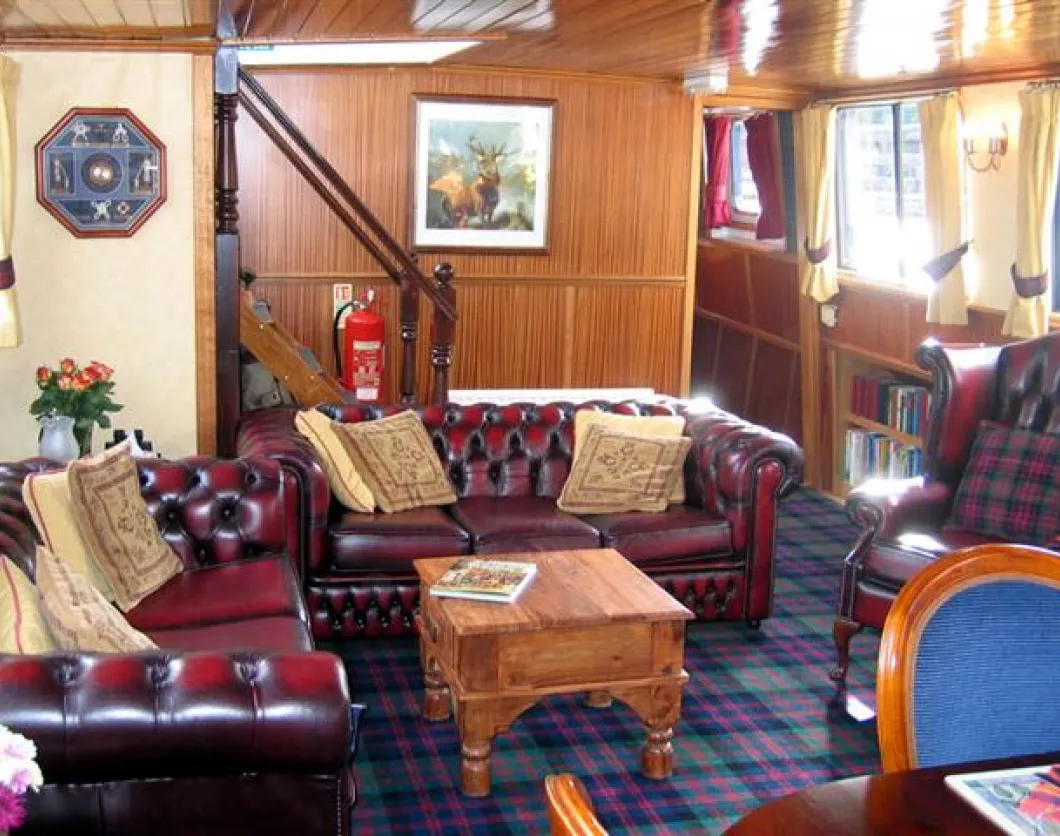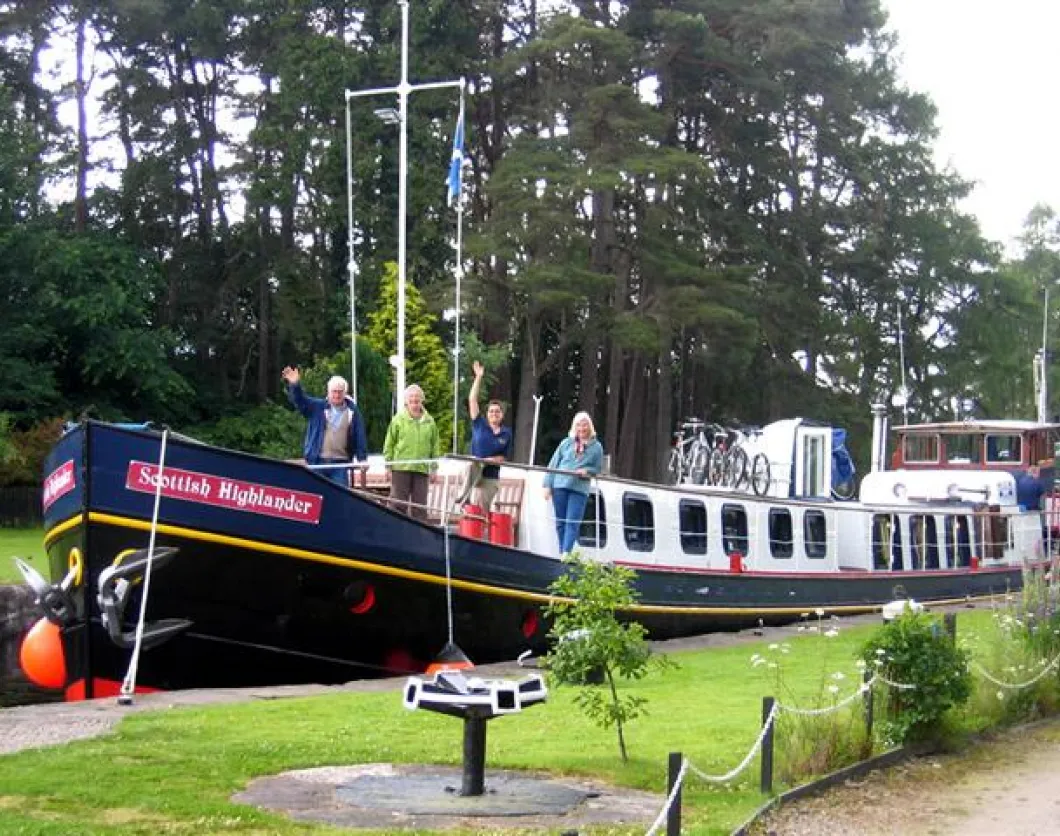Southwest to northeast through Scotland’s Great Glen, my husband and I barged the Highlands in the summer days of early July. Yes, we could have driven the 62 miles or 100 kilometers in a leisurely morning, or perhaps even walked the route from the Atlantic coast to the North Sea in the same seven days and six nights of our barging trip. However, not for either of those options would we have traded our elegant, educational barge cruise through the 29 locks of the 200-year-old Caledonian Canal, nor our stately navigation along the length of four finger-shaped lochs (lakes), including Loch Ness of monster fame.
As we stepped into the “saloon”, the four staff (for eight guests!) greeted us with champagne and seafood hors d’oeuvres. What about the whisky? That comes later, we were assured. With a barge 117 feet long and 16.5 feet wide, there is no chance of getting lost, but it still takes a while to get oriented on any vessel, offload luggage into stateroom cupboards and drawers, and explore the best viewpoints.
Built as a Dutch grain carrier in 1931, Scottish Highlander’s transition from industrial workhorse to trim tourism vessel was made in the mid-1990s. The interior wood and brass gleam to perfection, soft tartan carpeting is a gentle reminder of exactly where we are, and the furnishings suggest a slower Edwardian era of grace and polish when cruising 60 miles in a week was considered a civilized distance.
With our own liveaboard guide, creative half-day van excursions lured us deeper into the Great Glen while still guaranteeing that we were back on board for each one of the chef's traditional Scottish meals focusing on salmon, game, venison and seafood. The bottomless cellar of fine French wines, British ciders and beers to compliment every dish is also a point of great pride aboard the barge, all included, of course, as are the excursions and entry fees to any attractions along the route.
Certainly we didn’t want to miss those moments when the barge’s 47-year-old diesel engine rumbled to life and the ropes were neatly re-coiled on the deck ready for the next tie-up. For the men in our party, the engineering fascination of the Caledonian Canal locks was a natural conversation topic with Captain Dan predictably found in the wheelhouse once the vessel was under way.
There were those, my husband among them, who occasionally saw fit to abandon ship and accompany the Scottish Highlander from the shore, either walking or bicycling a picturesque tow path on the narrower stretches. On a sunny morning or afternoon, a walk of four or six miles along a perfectly flat path that skirts sheep farms and bird-rich parkland is pretty enticing.
As part of the barging itinerary, guided van excursions to three very different clan castles provided a glimpse of the rough and tumble history among the Highland clans and between the English and Scots. On another day, we visited the site of the famous Glencoe Massacre with an informative interpretation centre overlooking what is today a peaceful steep-sided valley of startling velvety green. And, of course, an educational whisky-tasting excursion to an historic distillery was not to be missed by anyone.
The geological fault that created the chiseled mountains, gently-flowing rivers and vivid blue lochs of the Great Glen slice through the Highlands of Scotland as though a pencil and ruler had been used to line them up precisely. Though it is only 23 miles/37 kilometers long, Loch Ness is very deep at 754 feet, containing more fresh water than all the lakes in England and Wales combined. Clearly, the illusive Loch Ness Monster has plenty of places to hide!
One-third of the barging route is manmade, with 29 locks, four aqueducts and 10 bridges making up the Caledonian Canal, navigated over several days. Built between 1803 and 1822, it was never the commercial success intended because the depth proved insufficient for industrial traffic. Impressively maintained today by government-owned British Waterways, the route is largely for recreation. Scottish Highlander is one of its largest clients in size, and the only hotel barge plying the waters between the two coasts.
With a maximum of eight guests in four cabins, the Scottish Highlander cruises year round. It accommodates theme cruises (golf, cycling, fishing, family) as well as popular Christmas and New Years cruises. The standard one-week itinerary may be customized for specific groups. For 35 years, European Waterways (Gobarging.com) has been a leader in luxury European hotel barging.
By Alison Gardner
Editor/journalist, Alison Gardner, is a global expert on nature-based vacations and cultural/educational travel. Her Travel with a Challenge web magazine, is a recognized source of new and established operators, accommodations and richly-illustrated feature articles covering all types of senior-friendly alternative travel.










